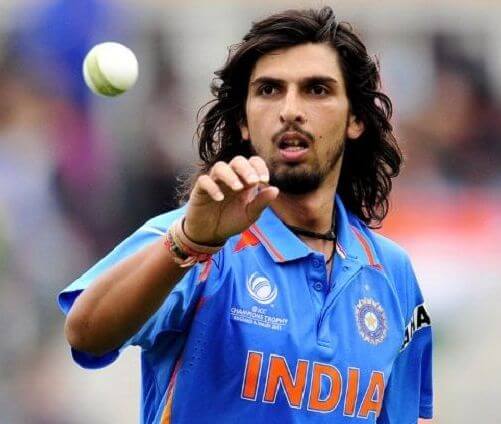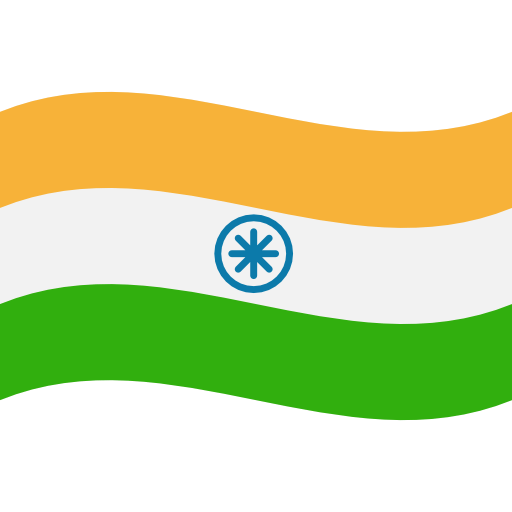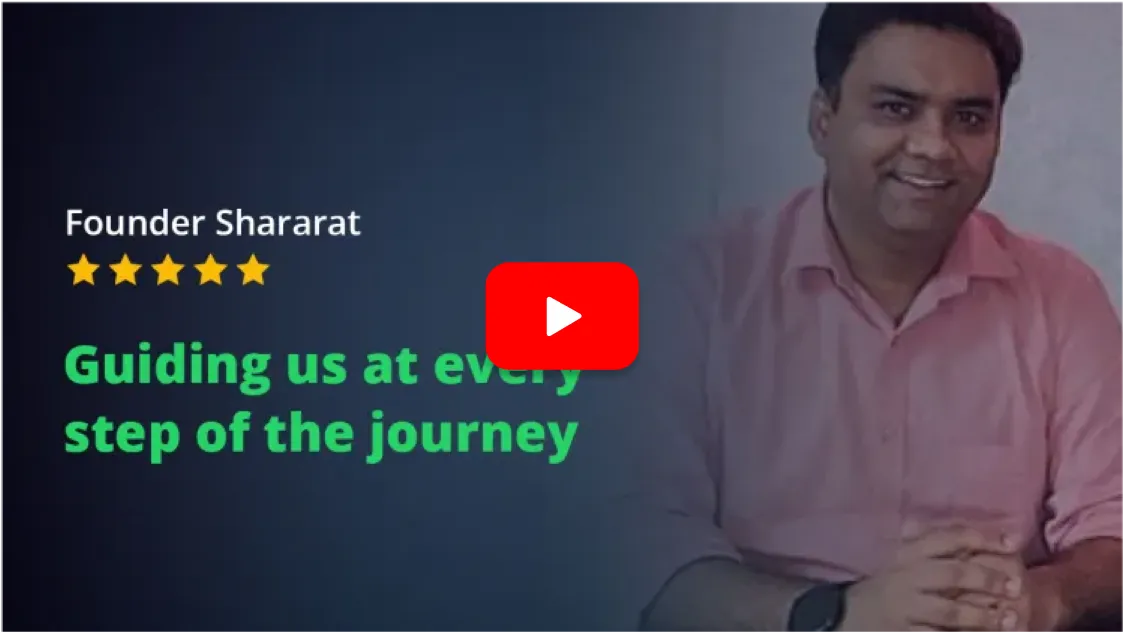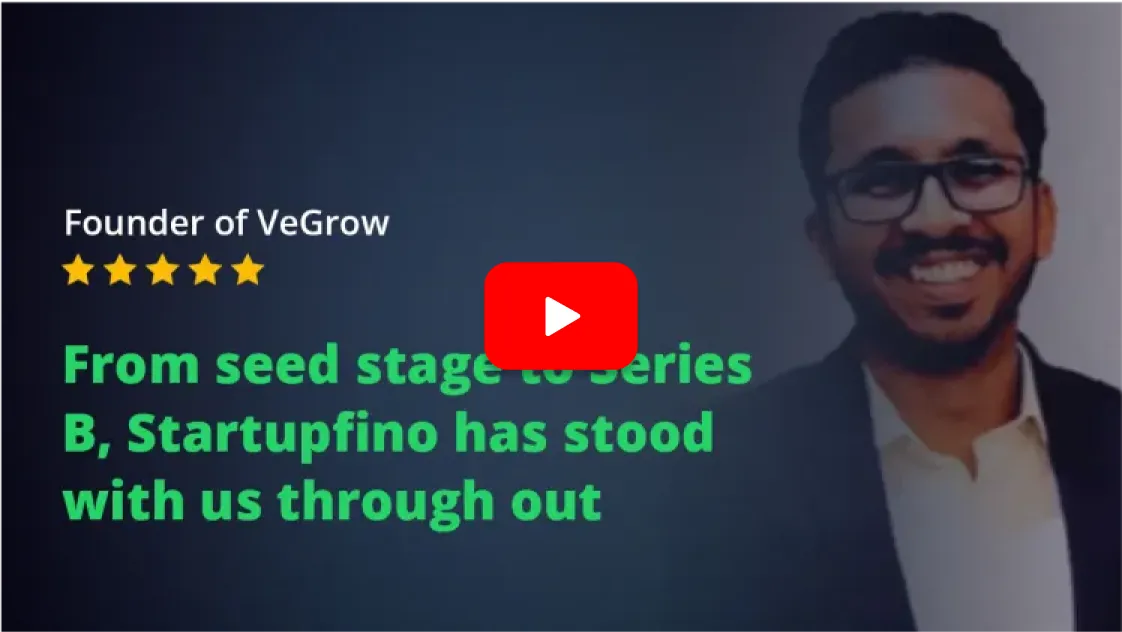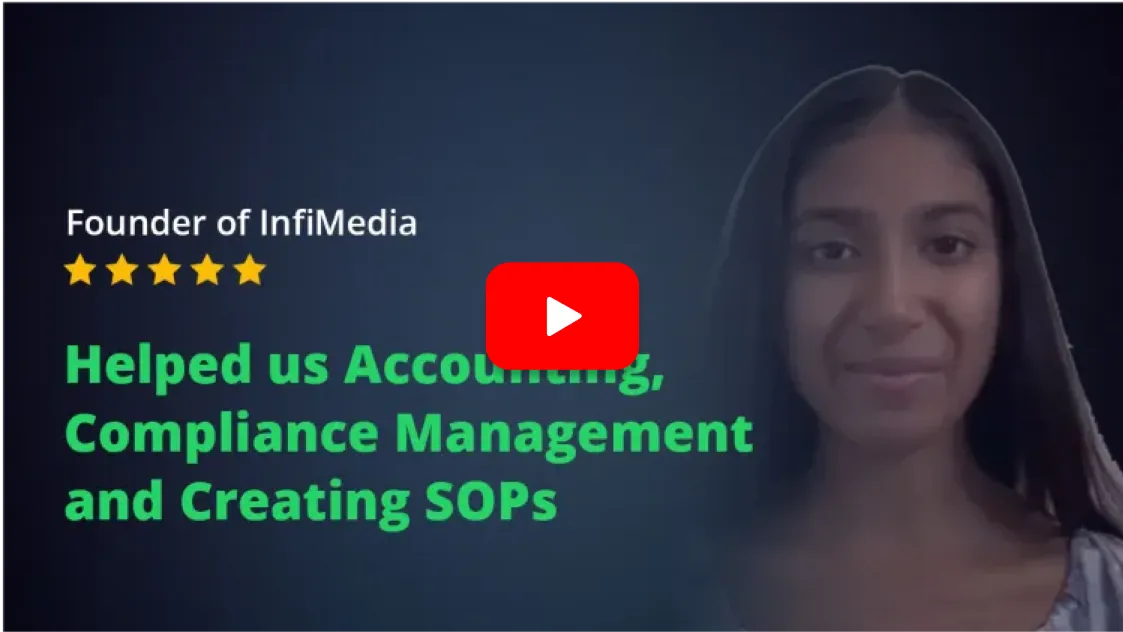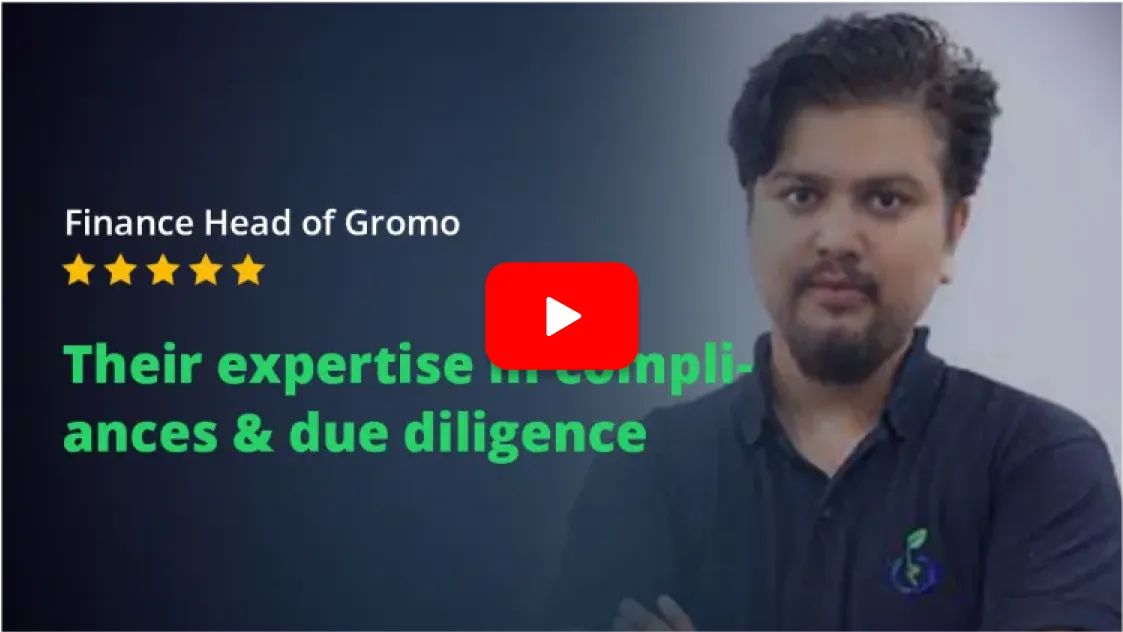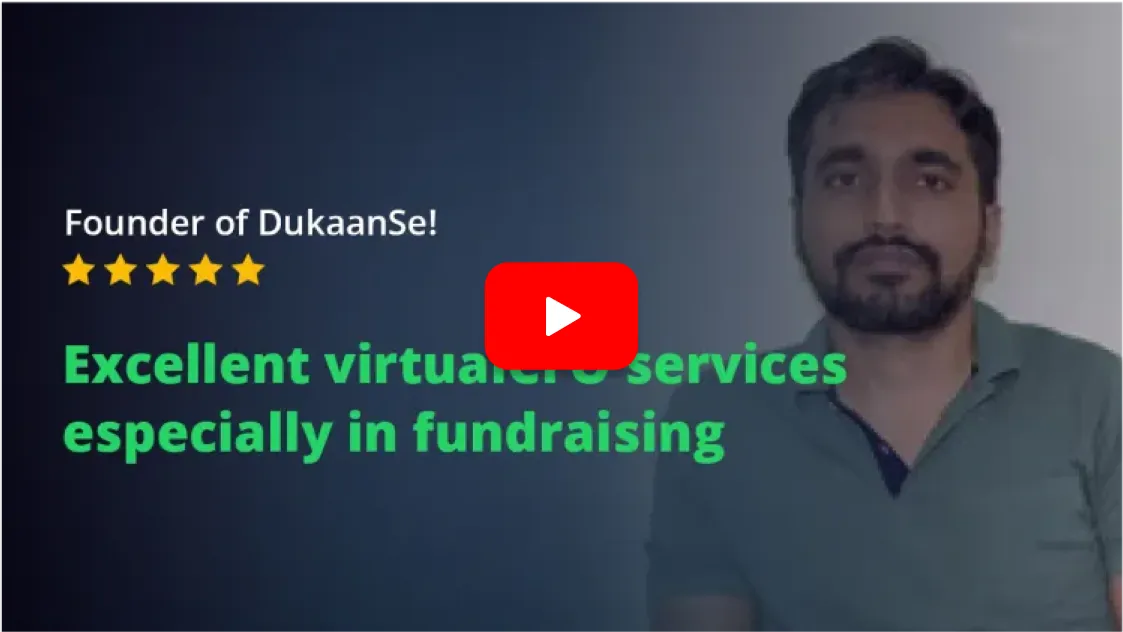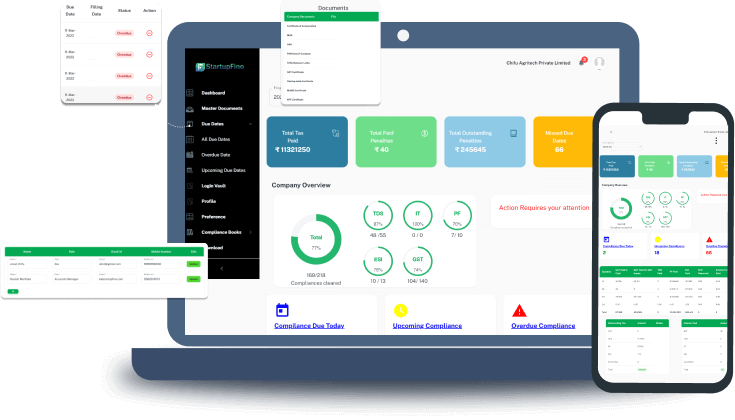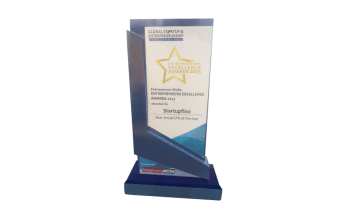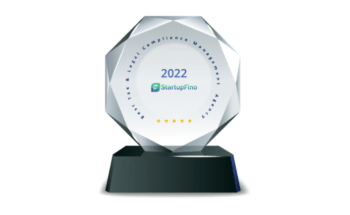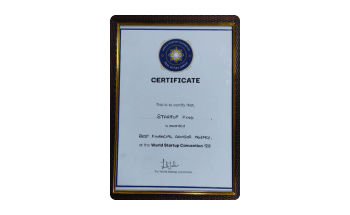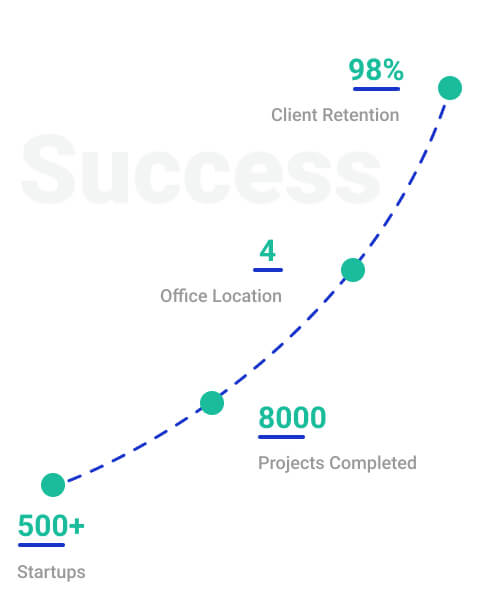Patent registration is a special permission given by the government to a person or a company, which prevents others from creating, using, selling or bringing in the patented item or method without the approval of the patent holder.
To protect their innovation from being misused, inventors usually start by filing for a patent. The process of applying for a patent in India can be quite lengthy. However, with StartupFino, you can make this registration process smoother and more convenient.
Benefits of Patent Registration in India
Registering a patent in India offers several advantages for inventors and businesses, promoting innovation and safeguarding intellectual property. Given below are the key benefits of patent registration:
- Ownership of Invention:
When granted a patent, the applicant becomes the sole owner of the invention or idea, providing recognition and legal protection.
- Protection Against Copying:
Patents prevent competitors from copying, selling or importing the intellectual property without the patent holder's consent. This safeguards the innovation's integrity.
- Monetisation:
Patents can be monetised through sales or licencing arrangements, allowing inventors to generate income from their intellectual property.
- Transfer of Ownership:
Inventors have the flexibility to transfer patent ownership, allowing them to sell or assign their patent rights to others.
- Enhanced Brand Reputation:
Patented products or processes often command a higher brand perception, enabling businesses to charge premium prices and gain a competitive edge.
- Exclusive Rights:
Patent holders enjoy exclusive rights to their invention for a considerable period, typically 20 years or more. This exclusive control can lead to market dominance.
- International Protection:
The Indian government provides support for international patent filing through schemes that offer financial reimbursement for expenses incurred during the process, benefiting inventors, particularly in the MSME sector.
Types of Patent Applications in India
- Provisional Application:
A provisional application, also known as a temporary application, is a preliminary filing for inventions in progress, providing certain advantages in the patent process.
- Ordinary or Non-Provisional Application:
An ordinary or non-provisional application is a formal patent application that can be filed in different ways and has specific implications based on the filing method.
- Direct Filing:
This filing method involves submitting a complete specification directly to the Indian Patent Office without prior provisional specification.
- Subsequent Filing:
In this approach, a complete specification is filed after a corresponding provisional specification and can claim priority from the provisional filing.
- Convention Application:
A convention application is filed to claim priority based on an earlier application submitted in a convention country, allowing international protection. To avail the benefits of the convention, an applicant must act within a specified time frame.
- PCT International Application:
A PCT international application is a gateway to expedited patent protection in numerous countries, not a direct international patent grant, under the Patent Cooperation Treaty. It enables protection against copying of the invention in up to 142 countries.
- PCT National Application:
This application is used when an inventor needs protection for an invention or its minor modification, previously patented or applied for by the same applicant. It simplifies the process in such cases.
- Divisional Application:
A divisional application is employed when a single application includes more than one invention, allowing the applicant to split and file separate applications while maintaining the parent application's priority date.
What Can Be Patented in India?
In order to be eligible for a patent under the Patent Act, an invention must meet specific criteria, which are as follows:
- Novelty:
An invention is deemed novel when the information within its specification has not been previously published, whether in India or anywhere else, before the submission of the patent application in India. This basically means that the invention must be a new item or good that has not been previously discovered.
- Inventive Step:
The presence of an inventive step is a vital aspect of patent eligibility. It implies that the invention should not be apparent or easily discernible by an individual possessing an average level of expertise in the relevant field, considering prior publications, knowledge, and existing documents for the invention.
- Industrial Applicability:
For a patent to be granted, an invention must exhibit practical utility and find application in the industry. In other words, it should be capable of being manufactured or employed across various industrial domains, making a substantial contribution to the technology sector and society in whole.
Inventions that Cannot Be Patented
Under The Patent Act, there are certain types of inventions that are not considered eligible for patent protection, including:
- Contrary to Natural Laws:
Inventions that are contrary to natural laws or defy established scientific principles.
- Prejudicial to Life or the Environment:
Inventions that may be harmful to human, animal, or plant life, health, or the environment.
- Purely Scientific Discoveries or Abstract Theories:
Mere discoveries of scientific principles or the formulation of abstract theories.
- Discovery of Natural Substances:
Inventions that are mere discoveries of substances, whether living or non-living, found in nature.
- Known Processes or Machines:
Inventions that are merely known processes or machines, unless they result in a genuinely new product.
- Mere Admixture:
Combinations of substances that result in a mere collection of the properties of the components.
- Common Arrangement of Devices:
Inventions involving the mere arrangement or rearrangement of commonly used devices.
- Excluded by Amendment Act:
Inventions excluded by the Patents (Amendment) Act, 2002.
- Agricultural or Horticultural Methods:
Methods used for agricultural or horticultural purposes.
- Computer Programs and Mathematical Methods:
Computer programs or mathematical methods as standalone inventions.
- Literary, Artistic or Entertainment Works:
Creations in literature, drama, music, art, including cinematographic works and television productions.
- Methods of Playing Games:
Mere methods of playing games.
- Information Presentation:
Inventions that involve the mere presentation of information.
- Topography of Integrated Circuits:
The topography of integrated circuits.
- Aggregation of Known Properties:
Inventions that aggregate or duplicate known properties of components that are traditionally known.
Forms Required for Patent Registration Application
The process of patent registration in India involves several important forms that must be submitted at various stages of the application. Given below is a list of the key forms required for patent registration:
- Form 1 - Patent Registration Application:
This is the initial application form used to request patent registration. It provides basic information about the invention and the applicant.
- Form 2:
This form serves the purpose of furnishing a comprehensive description of the invention, regardless of whether it's a provisional or a complete specification.
- Form 3:
This includes a statement and undertaking, as mandated by Section 8 of The Patents Act, 1970. This statement addresses any earlier applications associated with the invention.
- Form 5 - Inventorship Declaration:
This form is necessary for applications with complete specifications or for convention applications. It declares the inventors involved in the creation of the invention.
- Form 9 - Publication Request:
This form is used to request the publication of the patent application in the official patent journal.
- Form 18 - Examination Request:
A formal request for patent examination is submitted using this form within the specified timeframe, typically within 48 months of the patent's first filing.
- Form 26 - Patent Agent Authorisation:
If a patent application is filed by a Patent Agent, this form is used to grant authorisation. A self-attested copy of a general power of authority may be filed by the Patent Agent or Patent Attorney.
- Form 28 - For Small Entity:
This form is for entities that qualify as small entities. It may include reduced fees for patent application processing.
Eligibility for Patent Registration in India
Given below are the eligible parties who can file a patent application in India:
- The True and First Inventor:
The primary inventor of the invention can file a patent application.
- True and First Inventor's Assignee:
An assignee, authorised by the primary inventor, is eligible to apply for a patent.
- The Representative of a Deceased True and First Inventor or His/Her Assignee:
In the event of the true and first inventor's demise, their legal representative or the authorised assignee can seek a patent.
- Entities and Individuals:
According to the Patent Act, a "person" eligible to apply for a patent includes natural persons, companies, etc. Therefore, patents can be sought by:
- Natural persons
- Companies
- Associations
- Bodies of individuals
- Government bodies
- Proprietorship Firms:
For a proprietorship firm, the patent application should be made in the proprietor's name.
- Partnership Firms:
In the case of partnership firms, the patent application should include the names of all the personally responsible partners.
- Assignees:
An assignee can be either a natural person or a legal entity, including registered companies, Limited Liability Partnerships, Section 8 Companies, etc.
Documents Required for Patent Registration in India
When applying for a patent registration in India, certain essential documents and forms must be submitted to the relevant authorities. The following is a list of the required documents and forms:
- Patent Application in Form-1:
The initial patent application form, providing basic information about the invention.
- Proof of Right to File Application from the Inventor:
This can be demonstrated through an endorsement at the end of the application or a separate agreement attached to the patent application.
- Provisional Specifications:
If complete specifications are not available, provisional specifications should be provided.
- Complete Specification in Form-2:
This must be submitted within 12 months of filing the provisional specification.
- Statement and Undertaking under Section 8 in Form-3:
This form is required if applicable and can be filed along with the application or within 6 months from the application date.
- Declaration as to Inventorship in Form 5:
Necessary for applications with complete specifications, convention applications, or PCT applications designating India. Form-5 can be filed within one month from the date of filing of the application if requested in Form-4.
- Power of Authority in Form-26:
Required if a patent application is being filed by a Patent Agent. A self-attested copy of a general power of authority can be filed by the Patent Agent or Patent Attorney.
- Priority Document:
In specific cases such as Convention Applications under the Paris Convention or PCT National Phase Applications that have not fulfilled Rule 17.1(a or b) requirements, a priority document must be submitted. This should be filed along with the application or before the expiration of eighteen months from the priority date to enable early publication of the application.
- Permission from National Biodiversity Authority:
If the application pertains to a biological material obtained from India, the applicant must submit permission from the National Biodiversity Authority. This can be provided before the grant of the patent. The source of geographical origin of any biological material used in the specification should be clearly indicated in the application form.
- Signatures and Dates:
All patent applications should be signed by the applicant, an authorised person, or a Patent Attorney. The provisional or complete specification should be signed on the last page, and drawing sheets should contain the signature of an applicant or agent in the right-hand bottom corner.
Forms Required for Patent Registration Application
The process of patent registration in India involves several important forms that must be submitted at various stages of the application. Given below is a list of the key forms required for patent registration:
- Form 1 - Patent Registration Application:
This is the initial application form used to request patent registration. It provides basic information about the invention and the applicant.
- Form 2:
This form serves the purpose of furnishing a comprehensive description of the invention, regardless of whether it's a provisional or a complete specification.
- Form 3:
This includes a statement and undertaking, as mandated by Section 8 of The Patents Act, 1970. This statement addresses any earlier applications associated with the invention.
- Form 5 - Inventorship Declaration:
This form is necessary for applications with complete specifications or for convention applications. It declares the inventors involved in the creation of the invention.
- Form 9 - Publication Request:
This form is used to request the publication of the patent application in the official patent journal.
- Form 18 - Examination Request:
A formal request for patent examination is submitted using this form within the specified timeframe, typically within 48 months of the patent's first filing.
- Form 26 - Patent Agent Authorisation:
If a patent application is filed by a Patent Agent, this form is used to grant authorisation. A self-attested copy of a general power of authority may be filed by the Patent Agent or Patent Attorney.
- Form 28 - For Small Entity:
This form is for entities that qualify as small entities. It may include reduced fees for patent application processing.
Forms Required for Patent Registration Application
The process of patent registration in India involves several important forms that must be submitted at various stages of the application. Given below is a list of the key forms required for patent registration:
- Form 1 - Patent Registration Application:
This is the initial application form used to request patent registration. It provides basic information about the invention and the applicant.
- Form 2:
This form serves the purpose of furnishing a comprehensive description of the invention, regardless of whether it's a provisional or a complete specification.
- Form 3:
This includes a statement and undertaking, as mandated by Section 8 of The Patents Act, 1970. This statement addresses any earlier applications associated with the invention.
- Form 5 - Inventorship Declaration:
This form is necessary for applications with complete specifications or for convention applications. It declares the inventors involved in the creation of the invention.
- Form 9 - Publication Request:
This form is used to request the publication of the patent application in the official patent journal.
- Form 18 - Examination Request:
A formal request for patent examination is submitted using this form within the specified timeframe, typically within 48 months of the patent's first filing.
- Form 26 - Patent Agent Authorisation:
If a patent application is filed by a Patent Agent, this form is used to grant authorisation. A self-attested copy of a general power of authority may be filed by the Patent Agent or Patent Attorney.
- Form 28 - For Small Entity:
This form is for entities that qualify as small entities. It may include reduced fees for patent application processing.
Eligibility for Patent Registration in India
Given below are the eligible parties who can file a patent application in India:
- The True and First Inventor:
The primary inventor of the invention can file a patent application.
- True and First Inventor's Assignee:
An assignee, authorised by the primary inventor, is eligible to apply for a patent.
- The Representative of a Deceased True and First Inventor or His/Her Assignee:
In the event of the true and first inventor's demise, their legal representative or the authorised assignee can seek a patent.
- Entities and Individuals:
According to the Patent Act, a "person" eligible to apply for a patent includes natural persons, companies, etc. Therefore, patents can be sought by:
- Natural persons
- Companies
- Associations
- Bodies of individuals
- Government bodies
- Proprietorship Firms:
For a proprietorship firm, the patent application should be made in the proprietor's name.
- Partnership Firms:
In the case of partnership firms, the patent application should include the names of all the personally responsible partners.
- Assignees:
An assignee can be either a natural person or a legal entity, including registered companies, Limited Liability Partnerships, Section 8 Companies, etc.
Eligibility for Patent Registration in India
Given below are the eligible parties who can file a patent application in India:
- The True and First Inventor:
The primary inventor of the invention can file a patent application.
- True and First Inventor's Assignee:
An assignee, authorised by the primary inventor, is eligible to apply for a patent.
- The Representative of a Deceased True and First Inventor or His/Her Assignee:
In the event of the true and first inventor's demise, their legal representative or the authorised assignee can seek a patent.
- Entities and Individuals:
According to the Patent Act, a "person" eligible to apply for a patent includes natural persons, companies, etc. Therefore, patents can be sought by:
- Natural persons
- Companies
- Associations
- Bodies of individuals
- Government bodies
- Proprietorship Firms:
For a proprietorship firm, the patent application should be made in the proprietor's name.
- Partnership Firms:
In the case of partnership firms, the patent application should include the names of all the personally responsible partners.
- Assignees:
An assignee can be either a natural person or a legal entity, including registered companies, Limited Liability Partnerships, Section 8 Companies, etc.
Documents Required for Patent Registration in India
When applying for a patent registration in India, certain essential documents and forms must be submitted to the relevant authorities. The following is a list of the required documents and forms:
- Patent Application in Form-1:
The initial patent application form, providing basic information about the invention.
- Proof of Right to File Application from the Inventor:
This can be demonstrated through an endorsement at the end of the application or a separate agreement attached to the patent application.
- Provisional Specifications:
If complete specifications are not available, provisional specifications should be provided.
- Complete Specification in Form-2:
This must be submitted within 12 months of filing the provisional specification.
- Statement and Undertaking under Section 8 in Form-3:
This form is required if applicable and can be filed along with the application or within 6 months from the application date.
- Declaration as to Inventorship in Form 5:
Necessary for applications with complete specifications, convention applications, or PCT applications designating India. Form-5 can be filed within one month from the date of filing of the application if requested in Form-4.
- Power of Authority in Form-26:
Required if a patent application is being filed by a Patent Agent. A self-attested copy of a general power of authority can be filed by the Patent Agent or Patent Attorney.
- Priority Document:
In specific cases such as Convention Applications under the Paris Convention or PCT National Phase Applications that have not fulfilled Rule 17.1(a or b) requirements, a priority document must be submitted. This should be filed along with the application or before the expiration of eighteen months from the priority date to enable early publication of the application.
- Permission from National Biodiversity Authority:
If the application pertains to a biological material obtained from India, the applicant must submit permission from the National Biodiversity Authority. This can be provided before the grant of the patent. The source of geographical origin of any biological material used in the specification should be clearly indicated in the application form.
- Signatures and Dates:
All patent applications should be signed by the applicant, an authorised person, or a Patent Attorney. The provisional or complete specification should be signed on the last page, and drawing sheets should contain the signature of an applicant or agent in the right-hand bottom corner.
Process of Patent Application in India
Given below is the process for the patent registration in India:
- Step 1: Engaging a Professional
1. Conduct a patentability search to determine the novelty, inventiveness, industrial application and enabling of the invention.
2. Create a user ID and password for applying online (https://ipindiaonline.gov.in/epatentfiling/user/NewUserRegistration.aspx).
- Step 2: Patentability Search
- Step 3: Drafting the Patent Application
- Step 4: Patent Filing Application
- Step 5: Publication of Application
- Step 6: Examination of the Application
- Step 7: Objection by the Examiner
- Step 8: Office Action Response
- Step 9: Grant of Patent Registration
Why Choose StartupFino for Patent Registration?
A patentable invention in India is characterised by its novelty, non-obviousness and practical utility within the industrial context, ensuring that it represents a true advancement in the field. For proper filing of patent registration, the forms mentioned here above are important as they provide necessary information, authorisations and requests to the Indian Patent Office. Properly completing and submitting these forms is essential for a successful patent application.
StartupFino is a company that specialises in offering complete patent registration services. We are dedicated to supporting you throughout the entire journey, from providing guidance in the early stages to ensuring you meet all the necessary requirements and adhere to regulations once your patent registration is finalised.




